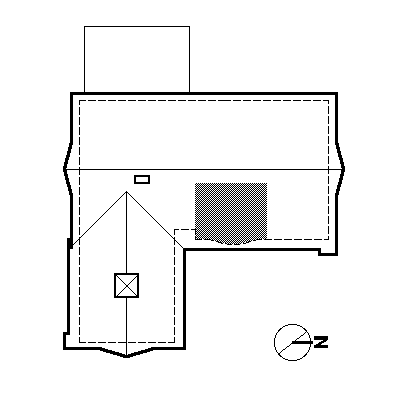
Sep 1, 2002
Pipe transition
A short piece of 4" O.D. (outside diameter) ABS pipe fits the curb hole snugly. The transition to the 3/4" PVC (Polyvinyl Chloride) pipe was made with an ABS clean-out plug and threaded cap (all the black pieces in the photo are ABS, the white is PVC). A 3/4" hole was then drilled in the ABS cap for a snug fit with the PVC. Sleeves were cemented to lock the joint. After pushing the PVC pipe through under the sidewalk, the threaded connection created a tight assembly.


Sump pump
 The pump itself is a small one that I got second-hand from my brother. It has the usual float switch, inlet connection that fits a common garden hose, and a grounded AC (alternating current) plug. These units are designed to be submersed for a long time. For good measure, my outlet is GFCI (ground-faulted circuit interrupter). The hole in the sump pit for the electrical conduit should be installed as high as possible to keep water away from electrical connections.
The pump itself is a small one that I got second-hand from my brother. It has the usual float switch, inlet connection that fits a common garden hose, and a grounded AC (alternating current) plug. These units are designed to be submersed for a long time. For good measure, my outlet is GFCI (ground-faulted circuit interrupter). The hole in the sump pit for the electrical conduit should be installed as high as possible to keep water away from electrical connections.
Sump pit
A sump pump is hardly ever needed at any distance from a building. They help with discharging water in poor drainage conditions that can cause foundation problems, so they're often installed right next to the foundation.
Nevertheless, I installed a cheap version way out near the sidewalk as a secondary measure because I have super-hard clay soil conditions. The water table here hits the hardpan like it's a waterproof wall and flows around it, causing underground rivulets during storms and leaving air voids when it's dry. Large cracks in the concrete ground are sure signs of air voids below the slab. I suspected poor drainage at the isolated location for the new tree.

The sump pit is just a 33-gallon waste bucket with three holes: drain inlet, discharge outlet, and power conduit. The cover handle is rot-resistant redwood because the whole thing will get buried.

Nevertheless, I installed a cheap version way out near the sidewalk as a secondary measure because I have super-hard clay soil conditions. The water table here hits the hardpan like it's a waterproof wall and flows around it, causing underground rivulets during storms and leaving air voids when it's dry. Large cracks in the concrete ground are sure signs of air voids below the slab. I suspected poor drainage at the isolated location for the new tree.

The sump pit is just a 33-gallon waste bucket with three holes: drain inlet, discharge outlet, and power conduit. The cover handle is rot-resistant redwood because the whole thing will get buried.

The big dig
Concrete removal was the most expensive part of this project. A simple 9'x15' section of driveway was to be broken up and taken away. However, a utility trench was needed to cross under the driveway for a drain pipe, an irrigation pipe, and an electrical conduit. Concrete cutting was required, not just concrete removal. The trench was eventually covered with paver bricks dry-grouted with crushed granite for appropriate semi-permanence.

Lessons learned
Hiring the concrete-removal contractor should have been better planned. I had to schedule them within just a few days due to friends and hired labor helping me on a specified day. Contractors with diamond-tipped concrete saws were important, too, not just concrete haulers (guys that can just swing a sledge hammer and drive a dumptruck). In addition to the 135 sq ft section and trench, I asked for a 4" hole at the curb (for a drain outlet) and two 14" diameter borings elsewhere (for future post footings).
Concrete removal cost: $800. Ouch.

Lessons learned
Hiring the concrete-removal contractor should have been better planned. I had to schedule them within just a few days due to friends and hired labor helping me on a specified day. Contractors with diamond-tipped concrete saws were important, too, not just concrete haulers (guys that can just swing a sledge hammer and drive a dumptruck). In addition to the 135 sq ft section and trench, I asked for a 4" hole at the curb (for a drain outlet) and two 14" diameter borings elsewhere (for future post footings).
Concrete removal cost: $800. Ouch.
Aug 1, 2002
Subscribe to:
Posts (Atom)
